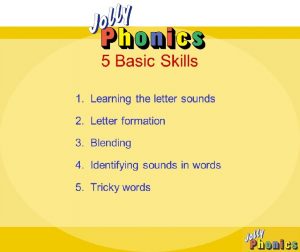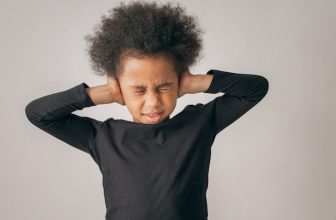
If you’re looking for a Phonics based learning system for your child, you probably have heard of Jolly Phonics. Developed by 2 elementary school teachers, Jolly Phonics books have become quite popular among parents.
Jolly Phonics is an interesting English literacy methodology that teaches kids ways to read and write by using phonics. Because it is known that sounds are important for reading and writing, and not just the names, phonics employs teaching of sounds which the letters make, instead of the names of the alphabet letters.
The program is designed by Sarah Wernahm and Sue Lloyd. The interesting thing about this program is that it works for both parents and children. It helps parents who have decided to homeschool their children to give their kids a headstart in pre-school and kindergarten.
What is Jolly Phonics?
Jolly Phonics is a fun approach to teaching children literacy by a synthetic phonics method. It incorporates actions for each of the sounds of the 42 letter. It is very motivating for kids as well as teachers. The program also has been variously proven to be a very effective mode of literacy teaching, and this is why the Universal Basic Education Commission (UBEC) is supporting it as its flagship program for English literacy.
According to a study by the University of Royal Holloway London, published by the Journal of Experimental Psychology and reproduced by ScienceDaily, phonics is the best way to teach reading.
Then also, a story by APM Reports and reprinted by The Hechinger Report concluded that Kids struggle to read when schools leave out phonics, mostly because teachers aren’t trained to teach phonics.
The 8 Steps for teaching letter Sound
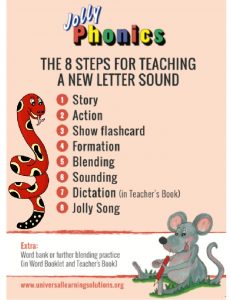 The phonics letter sounds app utilizes the universal 8 steps for teaching letters sounds, and its one reason it stands out. Here are the steps for teaching a letter Sound:
The phonics letter sounds app utilizes the universal 8 steps for teaching letters sounds, and its one reason it stands out. Here are the steps for teaching a letter Sound:
Step 1 – Story
Step 2 – Action
Step 3 – Flashcard
Step 4 – Formation
Step 5 – Blending
Step 6 – Sounding
Step 7 – Dictation
Step 8 – Song
What does Jolly Phonics provide?
Jolly Phonics resources enable early learning for writing and reading. It places a lot of emphasis on adopting a multi-sensory approach to reading and writing. This makes the whole educational process a lot more fun for little kids. It uses methods like songs, games, and storytelling.
What sets Jolly Phonics apart from traditional Phonics programs?
Jolly Phonics actually has 2 stages. It doesn’t just involve Phonics. It also has a grammar component. Once kids have a good feel for learning by Phonics, they start adopting grammar rules and this increases over time.
The Phonics Phases
The Phonics component of Jolly Phonics involves 5 basic skill phases that kids need for effective reading and writing.
Phase 1: Learning the sounds of letters
Jolly Phonics has a unique way of making learning letter sounds fun and effective. The sounds and actions are introduced before the kid knows letter names. In each letter sound, children are introduced to a story. They see the sound in action.
One example of this is the Finger Phonics Big Book. Some sounds are made up of 2 letters called digraphs. All told, there are 42 main sounds divide into letter-sound order. After the children learned the letter sound, sound sheets are given to them where they can then practice writing out the letters for each sound they hear.
This repetition improves the control of their pencils. The system also reinforces sound-based learning through a sound book. This records both the new and old sounds that kids learn. Using flashcards and a game called the Pairs, kids improve their letter sound recall.
Phase 2: Learning letter formation
In this part of the program, kids are coached to hold their pencil correctly using a 3 point grip system. This involves the first 2 fingers and the thumb.
To teach kids how to write properly, they are exposed to the Jolly Phonics DVD, Finger Phonics, Jolly Stories, and My First Letter sounds.
Phase 3: Blending
In this part, the kids are taught to combine letter sounds so that they produce words. These involve blending cards, the Phonics handbook, and the Jolly Phonics order word book.
Phase 4: Identifying sounds in words
Kids are now exposed to words that have the letter-sound combinations. They just need to listen and try to recognize these combinations. This is actually the simplest way to learn to spell a word. Through repetition, kids learn the combination of the words that they are able to identify through games and songs.
This learning process of blending different combinations is called segmenting.
Phase 5: Spelling tricky words
Kids are taught to read tricky words and identify the letter sounds that were mixed to create them. This is how they learn to tell the words apart. They also use tools like look, cover, write, check method, say as it is, and mnemonics.
The importance of the grammar stage in Jolly Phonics
Jolly Phonics involves the Jolly Phonics 42 sounds. There are many different combinations of sound words. Parents can download the Jolly Phonics flashcards PDF once they enroll in the program.
They also get access to the Jolly Phonics resources CD. Once the kids have familiarized themselves with letters and sounds actions, they will be ready for the grammar stage of the program.
Grammar includes the part of the speech and the structures of sentences such as capitals, alphabets, dictionary, thesaurus skills, nouns, verbs, plurals, sentences, and punctuation. This skill set also includes homophones and proofreading.
Kids are exposed to grammar through the Jolly dictionary, grammar games, grammar handbooks, which are 6 volumes, and the grammar big books, which come in 2 volumes.
Kids are also exposed to the Jolly dictionary and through practice, they are able to move past the Jolly Phonics letters and sounds action to a wide range of Jolly Phonics resources that enable them to read and write with a lot of confidence.
Letter Sound Order
The program taught in a special way that is not al[habetical, following what has been found to enable the kids to quickly build words early in their development.
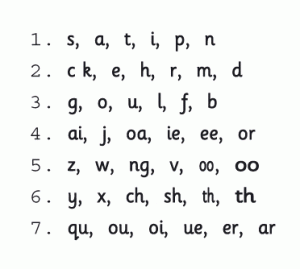
Letter Sounds
Jolly Phonics Songs
Another great selling point of this program is its song program. Jolly phonics songs are designed to strengthen and reinforce kids’ understanding of phonics and word sounds. Since language skills are picked up through repetition, this program’s songs and printed materials (including games), make the repetition process fun and ‘natural.’
Kids don’t feel like they are under pressure to go through their word sounds and pairings. Through song-based repetition, kids develop a sense of ease with mixing and matching sounds. Their creativity is triggered. There is nothing in the program that feels ‘forced.’ Kids are more likely to enjoy themselves and remain engaged for a longer period of time.
One of the biggest challenges in pre-school and kinder education is the short attention span of children. They can be easily distracted. Its fun repetition-based system involving cards, games, and songs are intended to keep kids engaged long enough so they can have fun learning. This system also encourages children to mix and match word sounds so they can ‘naturally’ discover pairings instead of a rigid rote-based process where they are told new combinations.
If you would like to get a good overview of how this system works, you might want to download Jolly Phonics PDF materials. Previewing these materials should be able to give you a Big Picture view of what it’s like to teach your kids reading, writing, and, most importantly, a love of learning, through a fun experience-based system. There’s nothing rote or ‘lecture’ like about Jolly Phonics. Its founders built it on the assumption that learning should engage all of a child’s senses and should be fun.
Are There Alternatives to Jolly Phonics for Teaching
Everything good always has alternatives, and this one is not an exception. For all the promises and good resources in the program, there are other alternatives you can also look at while evaluating:
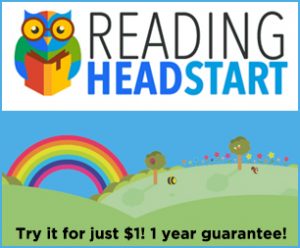
Reading Head Start Program
- Hooked on Phonics
- Reading Head Start
- Children Learning Reading
- ABCmouse
- Epic! Books for Kids
- Highlights for Children
- Magazines and Reading Apps for Kids
Stay updated with more educating study resources for your children by bookmarking our Child Care resource page and remember to sign up for our child care newsletter
Conclusions
The program has become popular around the world, so much so there are websites where you can get jolly phonics songs and actions free download, flashcards pdf, and other free resources used in teaching kids letters and sounds actions. The letter sounds app is indispensable for every caring parent and so you should consider placing a jolly phonics order.

